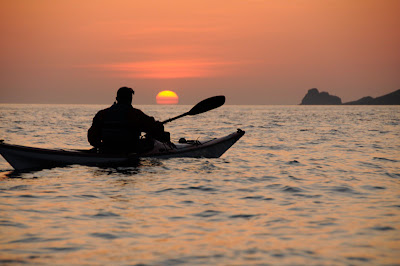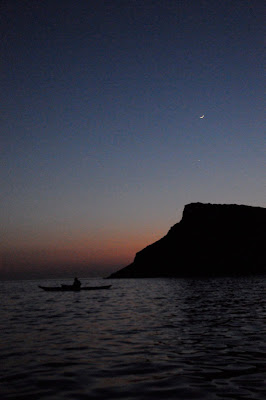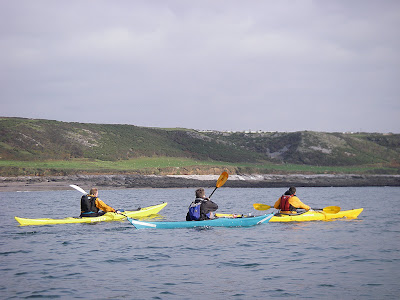Jim Krawiecki got in contact to ask if I fancied a paddle while he was down visiting God's Country. A paddle around Gower was in the offing, and almost the last bit of the South Wales coast I haven't yet paddled. It didn't take long to decide what to do.
I owe Jim a great debt. He co-wrote a book, with Andy Biggs, called Welsh Sea Kayaking - 50 great sea kayaking voyages. I was fortunate to pick up the book when I started to sea kayak. It provided inspiration and importantly the bits of information that made it possible for someone new to the sport to have at their finger tips the bits of information that can be used to plan and execute a successful trip. I have been steadily notching up each of the trips in the book - sad I know.
We meet at Port Eynon after work. The plan was simply to head out towards Worms Head, west, for a short paddle along the coast with the anticipation of watching the sun go down.
Leaving the bay, just around Port-Eynon Point there is an odd inlet called Culver Hole.
It's odd to see a blocked up cave in this area of unspoilt coastline. There are tales of it being a smugglers cave with an underground passage to the salt house at Port Eynon bay.
We could paddle right up to the base of it where there is an entrance. We didn't land to explore, leave that for a different trip. Culver Hole was most likely used as a dove cot to provide meat and eggs for the gentry.

As we move on around the coast the sun heads down, and the sky begins to fill with a vibrant orange. We are on for a show, the Icelandic dust is doing its scattering best.
Watching the sun going down I think of all those folk around the globe not being where they want to be. As for me, I'm quite content watching our star disappear over the horizon.


The sun put to bed, we turn to paddle back as the clear night sky turns dark and the stars begin to show themselves, the moon just about there. Out of this world.

Only downside was that sadly on returning in darkness to the beach we found that the fish and chip shop is closed.
We retire to the bar for recompense and the evenings entertainment begins in earnest.




















